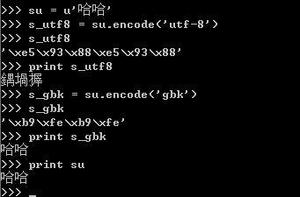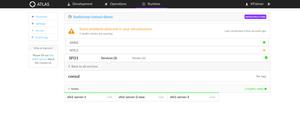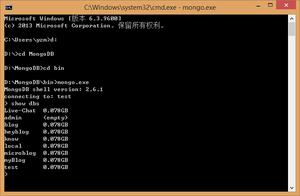python 文件操作

读写文件是最常见的IO操作。Python内置了读写文件的函数,用法和C是兼容的。
读写文件前,我们先必须了解一下,在磁盘上读写文件的功能都是由操作系统提供的,现代操作系统不允许普通的程序直接操作磁盘,所以,读写文件就是请求操作系统打开一个文件对象(通常称为文件描述符),然后,通过操作系统提供的接口从这个文件对象中读取数据(读文件),或者把数据写入这个文件对象(写文件)。
一、文件处理流程
1.打开文件,得到文件句柄并赋值给一个变量
2.通过句柄对文件进行操作
3.关闭文件
打开文件的模式有:
r,只读模式(默认)。
w,只写模式。【不可读;不存在则创建;存在则删除内容;】
a,追加模式。【可读; 不存在则创建;存在则只追加内容;】
"+" 表示可以同时读写某个文件
r+,可读写文件。【可读;可写;可追加】
w+,写读
a+,同a
"U"表示在读取时,可以将 \r \n \r\n自动转换成 \n (与 r 或 r+ 模式同使用)
rU
r+U
"b"表示处理二进制文件(如:FTP发送上传ISO镜像文件,linux可忽略,windows处理二进制文件时需标注)
rb
wb
ab
要以读文件的模式打开一个文件对象,使用Python内置的open()函数,传入文件名和标示符:
python">>>> f = open('/Users/michael/test.txt', 'r')标示符'r'表示读,这样,我们就成功地打开了一个文件。
如果文件不存在,open()函数就会抛出一个IOError的错误,并且给出错误码和详细的信息告诉你文件不存在:
>>> f=open('/Users/michael/notfound.txt', 'r')Traceback (most recent call last):
File "<stdin>", line 1, in <module>
FileNotFoundError: [Errno 2] No such file or directory: '/Users/michael/notfound.txt'
如果文件打开成功,接下来,调用read()方法可以一次读取文件的全部内容,Python把内容读到内存,用一个str对象表示:
>>> f.read()'Hello, world!'
最后一步是调用close()方法关闭文件。文件使用完毕后必须关闭,因为文件对象会占用操作系统的资源,并且操作系统同一时间能打开的文件数量也是有限的:
>>> f.close()由于文件读写时都有可能产生IOError,一旦出错,后面的f.close()就不会调用。所以,为了保证无论是否出错都能正确地关闭文件,我们可以使用try ... finally来实现:
try: f = open('/path/to/file', 'r')
print(f.read())
finally:
if f:
f.close()
但是每次都这么写实在太繁琐,所以,Python引入了with语句来自动帮我们调用close()方法:
with open('/path/to/file', 'r') as f: print(f.read())
这和前面的try ... finally是一样的,但是代码更佳简洁,并且不必调用f.close()方法。
调用read()会一次性读取文件的全部内容,如果文件有10G,内存就爆了,所以,要保险起见,可以反复调用read(size)方法,每次最多读取size个字节的内容。另外,调用readline()可以每次读取一行内容,调用readlines()一次读取所有内容并按行返回list。因此,要根据需要决定怎么调用。
如果文件很小,read()一次性读取最方便;如果不能确定文件大小,反复调用read(size)比较保险;如果是配置文件,调用readlines()最方便:
for line in f.readlines(): print(line.strip()) # 把末尾的'\n'删掉
要读取非UTF-8编码的文本文件,需要给open()函数传入encoding参数,例如,读取GBK编码的文件:
>>> f = open('/Users/michael/gbk.txt', 'r', encoding='gbk')>>> f.read()
'测试'
遇到有些编码不规范的文件,你可能会遇到UnicodeDecodeError,因为在文本文件中可能夹杂了一些非法编码的字符。遇到这种情况,open()函数还接收一个errors参数,表示如果遇到编码错误后如何处理。最简单的方式是直接忽略:
>>> f = open('/Users/michael/gbk.txt', 'r', encoding='gbk', errors='ignore')
利用b模式,编写一个cp工具,要求如下: 1. 既可以拷贝文本又可以拷贝视频,图片等文件
2 f=open('1.jpg','rb')3 data=f.read()
4 # print(data)
5 f=open('2.jpg','wb')
6 f.write(data)
7 print(data)
写文件
写文件和读文件是一样的,唯一区别是调用open()函数时,传入标识符'w'或者'wb'表示写文本文件或写二进制文件:
>>> f = open('/Users/michael/test.txt', 'w')>>> f.write('Hello, world!')
>>> f.close()
你可以反复调用write()来写入文件,但是务必要调用f.close()来关闭文件。当我们写文件时,操作系统往往不会立刻把数据写入磁盘,而是放到内存缓存起来,空闲的时候再慢慢写入。只有调用close()方法时,操作系统才保证把没有写入的数据全部写入磁盘。忘记调用close()的后果是数据可能只写了一部分到磁盘,剩下的丢失了。所以,还是用with语句来得保险:
with open('/Users/michael/test.txt', 'w') as f: f.write('Hello, world!')
要写入特定编码的文本文件,请给open()函数传入encoding参数,将字符串自动转换成指定编码。
细心的童鞋会发现,以'w'模式写入文件时,如果文件已存在,会直接覆盖(相当于删掉后新写入一个文件)。如果我们希望追加到文件末尾怎么办?可以传入'a'以追加(append)模式写入。
二、其它文件处理的方法
f.read([size]) #size为读取的长度,以byte为单位
f.readline([size]) #读一行,如果定义了size,有可能返回的只是一行的一部分
f.readlines([size]) #把文件每一行作为一个list的一个成员,并返回这个list。其实它的内部是通过循环调用readline()来实现的。如果提供size参数,size是表示读取内容的总长,也就是说可能只读到文件的一部分。
f.write(str) #把str写到文件中,write()并不会在str后加上一个换行符
f.writelines(seq) #把seq的内容全部写到文件中(多行一次性写入)。这个函数也只是忠实地写入,不会在每行后面加上任何东西。
f.close() #关闭文件。python会在一个文件不用后自动关闭文件,不过这一功能没有保证,最好还是养成自己关闭的习惯。 如果一个文件在关闭后还对其进行操作会产生ValueError
f.flush() #把缓冲区的内容写入硬盘
f.fileno() #返回一个长整型的”文件标签“
f.isatty() #文件是否是一个终端设备文件(unix系统中的)
f.tell() #返回文件操作标记的当前位置,以文件的开头为原点
f.next() #返回下一行,并将文件操作标记位移到下一行。把一个file用于for … in file这样的语句时,就是调用next()函数来实现遍历的。
f.seek(offset[,whence]) #将文件打操作标记移到offset的位置。这个offset一般是相对于文件的开头来计算的,一般为正数。但如果提供了whence参数就不一定了,whence可以为0表示从头开始计算,1表示以当前位置为原点计算。2表示以文件末尾为原点进行计算。需要注意,如果文件以a或a+的模式打开,每次进行写操作时,文件操作标记会自动返回到文件末尾。
f.truncate([size]) #把文件裁成规定的大小,默认的是裁到当前文件操作标记的位置。如果size比文件的大小还要大,依据系统的不同可能是不改变文件,也可能是用0把文件补到相应的大小,也可能是以一些随机的内容加上去。
注意:
1. seek有三种移动方式0,1,2,其中1和2必须在b模式下进行,但无论哪种模式,都是以bytes为单位移动的
seek控制光标的移动,是以文件开头作为参照的。
tell当前光标的位置
2. truncate是截断文件,截断必须是写模式,但是不能用w或w+等方式打开,因为那样直接清空文件了,所以truncate要在r+或a或a+等模式下测试效果
f.readline() 逐行读取数据
方法一:
>>> f = open('/tmp/test.txt')
>>> f.readline()
'hello girl!\n'
>>> f.readline()
'hello boy!\n'
>>> f.readline()
'hello man!'
>>> f.readline()
''
方法二:
>>> for i in open('/tmp/test.txt'):
... print i
...
hello girl!
hello boy!
hello man!
f.readlines() 将文件内容以列表的形式存放
>>> f = open('/tmp/test.txt')
>>> f.readlines()
['hello girl!\n', 'hello boy!\n', 'hello man!']
>>> f.close()
f.next() 逐行读取数据,和f.readline() 相似,唯一不同的是,f.readline() 读取到最后如果没有数据会返回空,而f.next() 没读取到数据则会报错
>>> f = open('/tmp/test.txt')
>>> f.readlines()
['hello girl!\n', 'hello boy!\n', 'hello man!']
>>> f.close()
>>>
>>> f = open('/tmp/test.txt')
>>> f.next()
'hello girl!\n'
>>> f.next()
'hello boy!\n'
>>> f.next()
'hello man!'
>>> f.next()
Traceback (most recent call last):
File "<stdin>", line 1, in <module>
StopIteration
f.writelines() 多行写入
>>> l = ['\nhello dear!','\nhello son!','\nhello baby!\n']
>>> f = open('/tmp/test.txt','a')
>>> f.writelines(l)
>>> f.close()
[root@node1 python]# cat /tmp/test.txt
hello girl!
hello boy!
hello man!
hello dear!
hello son!
hello baby!
f.seek(偏移量,选项)
>>> f = open('/tmp/test.txt','r+')
>>> f.readline()
'hello girl!\n'
>>> f.readline()
'hello boy!\n'
>>> f.readline()
'hello man!\n'
>>> f.readline()
' '
>>> f.close()
>>> f = open('/tmp/test.txt','r+')
>>> f.read()
'hello girl!\nhello boy!\nhello man!\n'
>>> f.readline()
''
>>> f.close()
这个例子可以充分的解释前面使用r+这个模式的时候,为什么需要执行f.read()之后才能正常插入
f.seek(偏移量,选项)
(1)选项=0,表示将文件指针指向从文件头部到“偏移量”字节处
(2)选项=1,表示将文件指针指向从文件的当前位置,向后移动“偏移量”字节
(3)选项=2,表示将文件指针指向从文件的尾部,向前移动“偏移量”字节
偏移量:正数表示向右偏移,负数表示向左偏移
>>> f = open('/tmp/test.txt','r+')
>>> f.seek(0,2)
>>> f.readline()
''
>>> f.seek(0,0)
>>> f.readline()
'hello girl!\n'
>>> f.readline()
'hello boy!\n'
>>> f.readline()
'hello man!\n'
>>> f.readline()
''
f.flush() 将修改写入到文件中(无需关闭文件)
>>> f.write('hello python!')
>>> f.flush()
[root@node1 python]# cat /tmp/test.txt
hello girl!
hello boy!
hello man!
hello python!
f.tell() 获取指针位置
>>> f = open('/tmp/test.txt')
>>> f.readline()
'hello girl!\n'
>>> f.tell()
12
>>> f.readline()
'hello boy!\n'
>>> f.tell()
23
四、内容查找和替换
1、内容查找
实例:统计文件中hello个数
思路:打开文件,遍历文件内容,通过正则表达式匹配关键字,统计匹配个数。
[root@node1 ~]# cat /tmp/test.txt
hello girl!
hello boy!
hello man!
hello python!
脚本如下:
方法一:
#!/usr/bin/python
import re
f = open('/tmp/test.txt')
source = f.read()
f.close()
r = r'hello'
s = len(re.findall(r,source))
print s
[root@node1 python]# python count.py
4
方法二:
#!/usr/bin/python
import re
fp = file("/tmp/test.txt",'r')
count = 0
for s in fp.readlines():
li = re.findall("hello",s)
if len(li)>0:
count = count + len(li)
print "Search",count, "hello"
fp.close()
[root@node1 python]# python count1.py
Search 4 hello
2、替换
实例:把test.txt 中的hello全部换为"hi",并把结果保存到myhello.txt中。
#!/usr/bin/python
import re
f1 = open('/tmp/test.txt')
f2 = open('/tmp/myhello.txt','r+')
for s in f1.readlines():
f2.write(s.replace('hello','hi'))
f1.close()
f2.close()
[root@node1 python]# touch /tmp/myhello.txt
[root@node1 ~]# cat /tmp/myhello.txt
hi girl!
hi boy!
hi man!
hi python!
实例:读取文件test.txt内容,去除空行和注释行后,以行为单位进行排序,并将结果输出为result.txt。test.txt 的内容如下所示:
#some words
Sometimes in life,
You find a special friend;
Someone who changes your life just by being part of it.
Someone who makes you laugh until you can't stop;
Someone who makes you believe that there really is good in the world.
Someone who convinces you that there really is an unlocked door just waiting for you to open it.
This is Forever Friendship.
when you're down,
and the world seems dark and empty,
Your forever friend lifts you up in spirits and makes that dark and empty world
suddenly seem bright and full.
Your forever friend gets you through the hard times,the sad times,and the confused times.
If you turn and walk away,
Your forever friend follows,
If you lose you way,
Your forever friend guides you and cheers you on.
Your forever friend holds your hand and tells you that everything is going to be okay.
脚本如下:
f = open('cdays-4-test.txt')
result = list()
for line in f.readlines(): # 逐行读取数据
line = line.strip() #去掉每行头尾空白
if not len(line) or line.startswith('#'): # 判断是否是空行或注释行
continue #是的话,跳过不处理
result.append(line) #保存
result.sort() #排序结果
print result
open('cdays-4-result.txt','w').write('%s' % '\n'.join(result)) #保存入结果文件
file-like Object
像open()函数返回的这种有个read()方法的对象,在Python中统称为file-like Object。除了file外,还可以是内存的字节流,网络流,自定义流等等。file-like Object不要求从特定类继承,只要写个read()方法就行。
StringIO就是在内存中创建的file-like Object,常用作临时缓冲。
以上是 python 文件操作 的全部内容, 来源链接: utcz.com/z/389028.html









